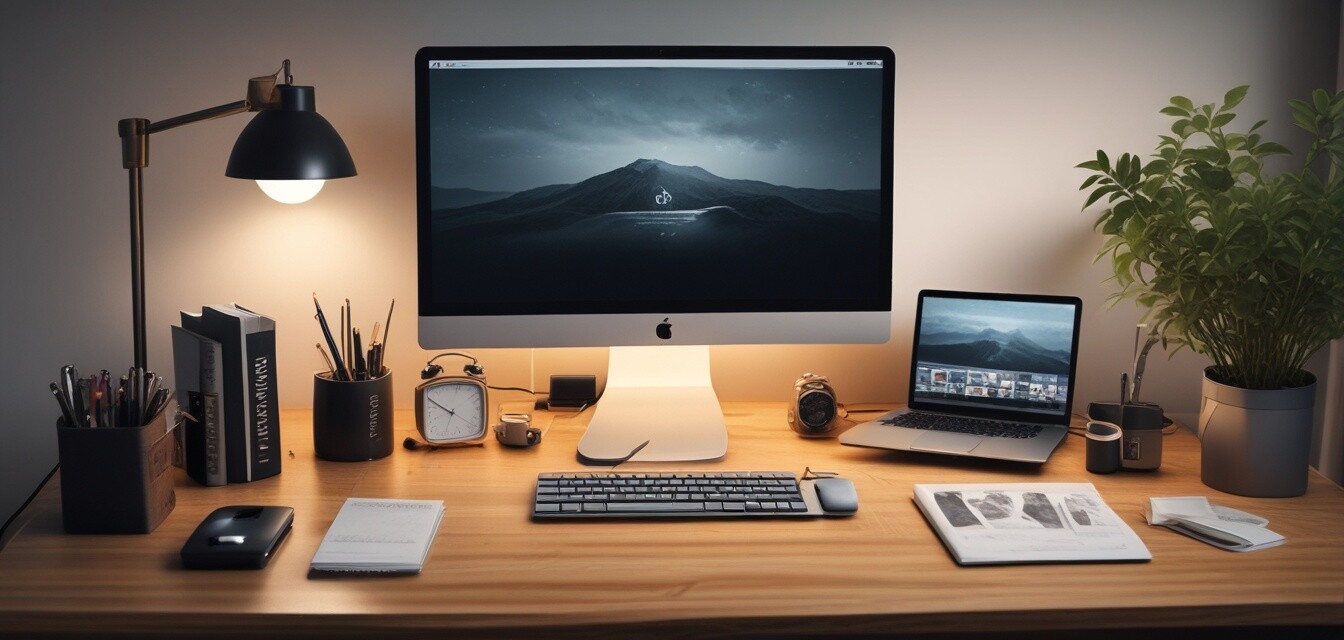
Choosing the right monitor size for your home office
- Consider the size of your workspace when choosing a monitor.
- Your personal comfort and usability preferences significantly impact your choice.
- Screen resolution plays an essential role in maximizing productivity.
- Multi-monitor setups can enhance efficiency for certain tasks.
- Review our buying guide for other essential home office accessories.
Choosing the right monitor size for your home office can greatly affect your productivity and comfort. With so many options available, it's vital to understand your workspace constraints, personal preferences, and how these factors interplay to create your ideal setup.
Understanding monitor sizes
Monitors come in various sizes, typically measured diagonally from corner to corner in inches. As a rule of thumb:
- 24 inches is considered a standard size for most tasks.
- 27-32 inches provides a more immersive experience, particularly for multitasking.
- 34 inches or larger can often be found in ultrawide models, ideal for professional environments with a focus on design and data analysis.
Factors to consider
1. Workspace dimensions
The first step in selecting the right size monitor is to measure your workspace. Here are some tips for assessing how much space you have:
- Determine available desk space by measuring the width and depth of your desk.
- Consider monitor stand height to ensure it fits comfortably on your desk.
- Leave room for other necessary accessories like a keyboard and mouse.
2. Viewing distance
The distance from your eyes to the monitor can affect your comfort and viewing experience. Generally, you should aim for:
- 20-30 inches for standard monitors (24-32 inches).
- At least 30 inches for larger, high-resolution screens.
| Monitor Size | Recommended Viewing Distance | Best Use Case |
|---|---|---|
| 24 inches | 20-30 inches | General use and office tasks |
| 27 inches | 24-30 inches | Multitasking and design work |
| 32 inches | 30 inches or more | Gaming, multitasking, professional use |
| 34 inches (ultrawide) | 30 inches or more | Creative tasks and data analysis |
3. Personal preferences
Your own comfort levels should also be a significant factor in your decision. Consider the following:
- Do you prefer more screen space for multitasking?
- Are you sensitive to screen size, requiring a more comfortable experience for long hours?
- What type of tasks will you be performing most often?
Assessing different monitor types
1. Flat panel monitors
Flat panel monitors are the most common. They offer a sleek design and are lightweight, making them easy to mount or adjust. Look for:
- Higher resolutions such as Full HD (1080p) or 4K for sharp images.
- Adjustable stands for optimal viewing angles.
2. Ultrawide monitors
These monitors provide an expansive screen area, great for multitasking. Benefits include:
- Less need for multiple monitors, saving desk space.
- More immersive experiences for gaming and design work.
3. Dual monitor setup
If one monitor isn't enough, consider a dual monitor setup that allows you to:
- Run multiple applications side by side.
- Increase overall productivity by having more visual real estate.
Pros
- Enhanced workspace with larger monitor sizes.
- Better visibility for multitasking setups.
- Improved ergonomics if positioned properly.
Cons
- Higher costs associated with larger or ultrawide monitors.
- Increased desk space requirements.
- The potential for eye strain with larger screens if not set up correctly.
Additional home office accessories
While selecting the right monitor is essential, there are other accessories to consider for a complete home office setup. Check out our other buying guides on:
- Docking stations for seamless connectivity.
- Ergonomic chairs to enhance comfort during long hours of work.
- Desk lamps for optimal lighting conditions.
Conclusion
Choosing the right monitor size for your home office involves evaluating your workspace, personal comfort, and how best to enhance your productivity. Whether you're aiming for a standard monitor, a larger screen, or a dual monitor setup, there’s a perfect option waiting for you. Explore our buying guides to find the top accessories that will complement your chosen monitor!